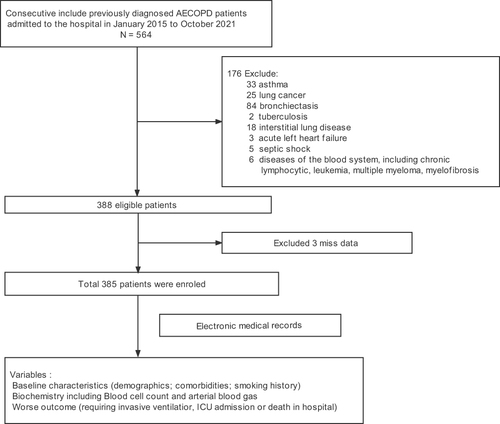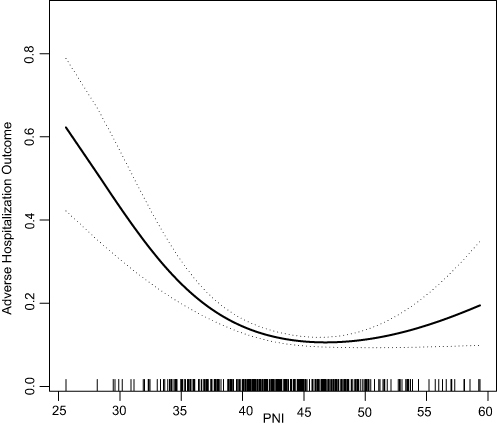Figures & data
Figure 1 Flowchart of the study participants.

Table 1 Baseline Characteristics of the Cohort Study Population by Prognostic Nutritional Index Tertiles
Table 2 Univariate Analysis for Adverse Hospitalization Outcomes
Table 3 Unadjusted and Adjusted Logistic Regression Models of PNI and Adverse Hospitalization Outcomes
Table 4 The Results of the Two-Piecewise Linear Regression Model
Figure 2 The relationship between PNI and adverse hospitalization outcomes. A nonlinear relationship was observed between the PNI and the adverse hospitalization outcomes after adjusting for sex, age, BMI, smoking status, comorbidities (including hypertension, diabetes, arrhythmia, congestive heart failure, chronic kidney disease and coronary artery disease), leukocytes, PLT, Eos, Hb, BUN, TC, NT-proBNP, pH, PaCO2, serum potassium, serum calcium, serum sodium, and required NIMV. The solid black line in the figure represents the best-fit line, and the black dotted lines are 95% confidence intervals.

Table 5 Subgroup Analyses of the Association Between PNI and Adverse Hospitalization Outcomes of AECOPD Patients
Data Sharing Statement
The dataset used and analyzed during the current study can be accessed by reasonable request from the authors.
